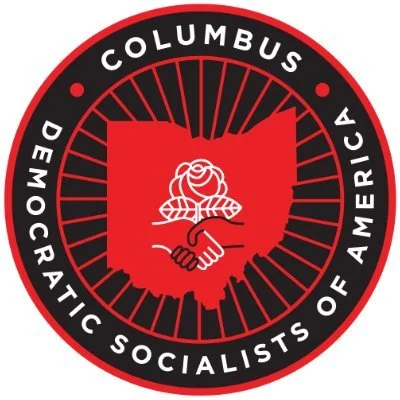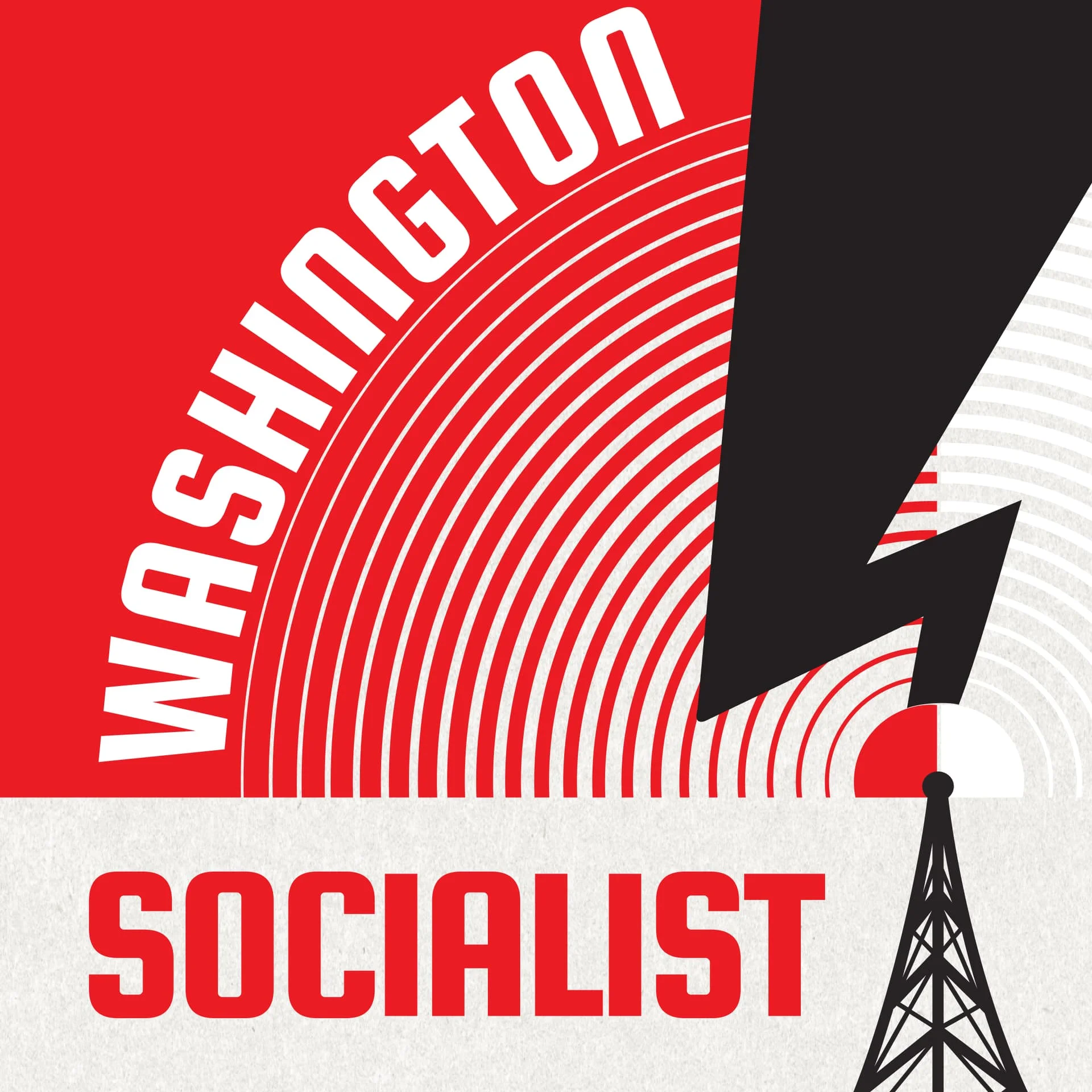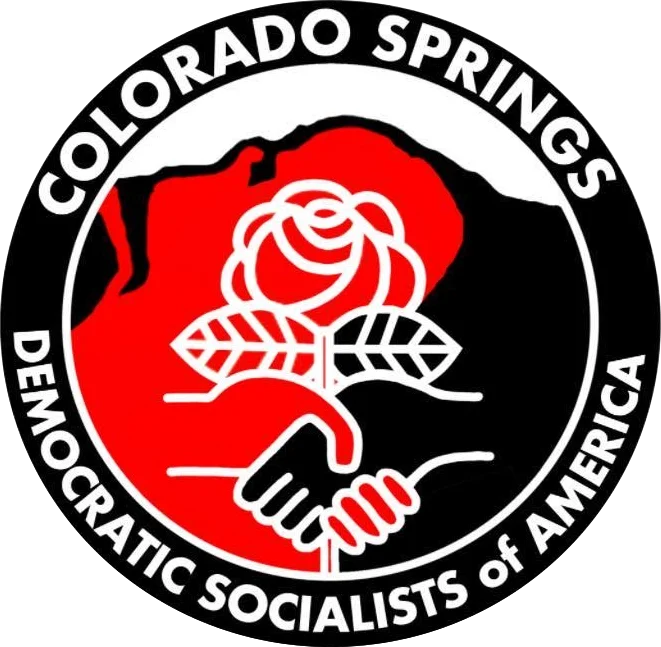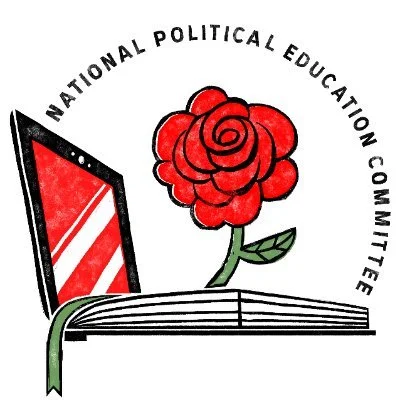

Columbus DSA March 2024 Democratic Primary Voting Guide
Contact: info@columbusdsa.org
COLUMBUS — The Columbus chapter of the Democratic Socialists of America (DSA) issues the following recommendations to residents of Central Ohio voting in the March 19, 2024, Democratic primary election.
- In Delegates-at-Large and Alternates-at-Large to the National Convention, LEAVE BLANK.
- In For U.S. Senator, LEAVE BLANK.
- In For Representative to Congress (3rd District), LEAVE BLANK.
- In For Representative to Congress (15th District), vote ZERQA ABID.
- In For Justice of the Supreme Court (Unexpired term ending 12-31-2026), vote TERRI JAMISON.
- In For State Representative (10th District), vote SARAH POMEROY.
- In For Judge of the Court of Common Pleas, vote STEPHANIE HANNA.
A detailed rationale for each recommendation follows. Additionally, see our addendum about the race for Franklin County Prosecutor.
Disclaimer: No recommendations made here are endorsements. Columbus DSA has not endorsed any candidate in this upcoming election. To our knowledge, there is no candidate that comes close to sharing our vision of democratic socialism as will be necessary to establish a free and just society. These recommendations are tactical considerations meant to minimize the harm likely to occur to the working class here and abroad as a result of this election.
Do you lament the lack of socialist, abolitionist, and pro-BDS candidates running for office? You can be a part of changing that, whether by running for office yourself or helping us to discover and cultivate future socialists-in-office. To advance the democratic socialist movement in Central Ohio, join DSA today: www.columbusdsa.org/join/.
Recommendation 1
In Delegates-at-Large and Alternates-at-Large to the National Convention, LEAVE BLANK.
DSA’s National Political Committee (NPC), our elected leadership, alongside DSA-endorsed U.S. Rep. Rashida Tlaib, supported an “Uncommitted” vote in the Michigan Democratic primary. The Listen to Michigan campaign to convince Democratic voters to vote “Uncommitted” was a remarkable success, earning over 100,000 “Uncommitted” votes in the primary. Campaigns in Hawaii, Minnesota, and other states have yielded similar successes.The Listen to Michigan campaign sent a clear message to President Biden: “Recant your support for Israel’s crimes, or you will lose reelection.” We stand by this message wholeheartedly.
Show the Democratic Party that Biden’s support for Israel’s crimes will cost Democrats the presidency if he fails to reverse course and repair the harm he has aided and abetted.
Because our primaries lack the option to vote “Uncommitted,” we recommend that Columbus voters simply leave this field blank. Unfortunately, unlike in some states, blank votes are not counted in Ohio. Meaning, these votes will not be tallied for or against Biden.
We note that Dean Phillips, the only other candidate on the ballot, has suspended his campaign and endorsed Biden. Therefore, if voters would like their vote to be tallied against Biden, they can safely mark their ballot for Phillips without actually lending support to Phillips in the election.
Recommendation 2
In For U.S. Senator, LEAVE BLANK.
Sherrod Brown has a strong record of support for organized labor, LGBTQ+ rights, and other progressive causes. We commend his recent decision to voluntarily recognize his campaign staffers’ union.
At the same time, Sen. Brown also has a strong record of support for Israel. Brown opposes the Boycott, Divestment, and Sanctions (BDS) movement and supports the Israel Anti-Boycott Act, a proposed federal law that would make it easier for states to promulgate BDS bans. Further, he objected to UN Security Council Resolution 2334, which found that Israel’s settlements in the West Bank and the Golan Heights violated international law.
Brown will be the Democratic nominee for the general election. We recommend that voters not mark their ballots for him in this primary to demonstrate that his continuing support of Israel is unacceptable.
Recommendation 3
In For Representative to Congress (3rd District), LEAVE BLANK.
Joyce Beatty retracted her signature from a letter to President Biden calling for a ceasefire in Gaza, claiming it was added in error. At a joint session of Congress welcoming Isaac Herzog, President of Israel, on July 19, 2023, Beatty said: “We are proud to celebrate Israel’s 75th anniversary and strengthen the ironclad relationship between the U.S. & Israel.” The U.S. Campaign for Palestinian Rights gave Beatty a score of “F” in its 2024 scorecard tracking Congressional Democrats’ records on Palestine. For 2024, Beatty has been endorsed by the American Israel Public Affairs Committee (AIPAC) and Democratic Majority for Israel.
Despite constant overtures from community organizers and members of her constituency over the past months and years, she has refused to recant her previous statements labeling Israel a U.S. ally, or to join the calls for a ceasefire led by DSA-endorsed Reps. Cori Bush and Rashida Tlaib. While we recognize that Rep. Beatty has recently voted against new apportionments of aid to Israel, these votes are too little too late, and Rep. Beatty has not signaled any change in her stance on long-term political and financial support of Israel.
Beatty will be the Democratic nominee for the general election. We recommend that voters not mark their ballots for her in this primary to demonstrate that her continuing support of Israel is unacceptable.
Recommendation 4
In For Representative to Congress (15th District), vote ZERQA ABID.
Zerqa Abid is founder and president of MY Project USA, a non-profit organization providing youth-focused community services in Columbus. She is running to challenge the incumbent in this seat, Rep. Mike Carey, a Trump-endorsed former coal lobbyist and pro-Israel Republican.
Abid supports a $15 minimum wage, gun control, and abortion access. If elected, she has promised to vote to restrict U.S. military interventions and oppose funding any foreign government or other entity committing human rights abuses. She supports a permanent ceasefire in Gaza.
Her primary opponent, Ohio Rep. Adam Miller, has been endorsed by the Franklin County Democratic Party. Abid will need all the help she can get to take on the Democratic establishment.
Recommendation 5
In For Justice of the Supreme Court (Unexpired term ending 12-31-2026), vote TERRI JAMISON.
Terri Jamison is a former Franklin County public defender and a supporter of the Ohio Sentencing Data Project, which will provide the public with detailed knowledge of the state of criminal sentencing in Ohio. Jamison, formerly a West Virginia coal miner, is a supporter of reproductive rights and bail reform. If elected, she would be the third Black woman to serve in the Supreme Court of Ohio. We see merit in Jamison’s blue-collar background, a more diverse state supreme court, and a supreme court more friendly to progressive positions on issues of criminal law.
Recommendation 6
In For State Representative (10th District), vote SARAH POMEROY.
Pomeroy is a Senior Assistant City Attorney in Columbus, working in the Nuisance Abatement division. Her work entails prosecuting out-of-state landlords that abuse tenants. Having witnessed the scale of Central Ohio’s housing crisis, Pomeroy is running on increasing the affordable housing supply, stopping property purchases by out-of-state private equity firms, and encouraging occupancy of vacant housing.
If elected, Pomeroy has promised to fight to overturn H.B. 68 and push back against attacks on reproductive healthcare. She supports automatic and same-day voter registration, and politician-free redistricting.
Pomeroy has been endorsed by Sheet Metal Workers Local 24, the Ohio Environmental Council, and Ohio Rep. Munira Abdullahi, among others.
Recommendation 7
In For Judge of the Court of Common Pleas, vote STEPHANIE HANNA.
If elected, Hanna has promised to establish a reentry docket to help individuals released from prison reintegrate into society. Her campaign has stated that Franklin County is the only large county in Ohio still lacking such a docket, and Hanna sees the need for one here. We agree.
Hanna, who has served on the boards of the Children’s Hunger Alliance, YWCA Columbus and Mental Health America of Ohio, would be the first Egyptian-American judge in Franklin County, and the second in Ohio. Noting that less than a third of Ohio judges are women, Hanna wishes to redress that inequality.
Hanna was registered as a Republican from 2014 to 2021, and ran as a Republican in the 2016 and 2020 judicial elections. She voted as a Democrat from 2010 to 2012 and re-registered as a Democrat in 2022. She also previously served as a prosecutor in Tiffin. Still, we see merit in voting for her over her primary opponent, Ohio Rep. Richard Brown, who opposes establishing a reentry docket, on this single issue.
Addendum
There is no candidate in the upcoming prosecutorial election that meets DSA’s standards for criminal legal reform. Rather than recommending a certain candidate to voters, we will simply state what we know about each.
Pierson
Pierson currently serves as deputy chief counsel in the office of Franklin County Prosecutor Gary Tyack. He previously worked as an Assistant Attorney General under Dave Yost, where he oversaw the A.G.’s investigations into officer-involved critical incidents and shootings. Pierson has been endorsed by Tyack and Franklin County Sheriff Dallas Baldwin.
Writing in the Dispatch, Rev. Raymond Greene, Jr., executive director of Freedom BLOC, urged Columbus residents to vote against Pierson due to his failure to prosecute the officers who shot and killed 25-year-old Jayland Walker in 2022. Pierson oversaw the Attorney General’s investigation into that shooting. J.U.S.T. 614, a trusted community organization and core organizing partner of our chapter, has also called on residents to oppose Pierson’s candidacy. Pierson’s campaign is attempting to address concerns over lack of transparency in officer-involved shootings. If elected, Pierson has promised to mandate that the case file for any offer involved use-of-force case be posted publicly online within 48 hours of a grand jury’s failure to indict.
Pierson previously defended the Franklin County Prosecutor’s decision to recommend a bond of $400,000 for any defendant charged with possessing a firearm who was previously convicted of a first or second-degree felony for drug or violent offenses.
Given the grievances that members of our community have lodged against Pierson, we cannot recommend a vote for him.
Favor
We also cannot recommend Shayla Favor. Despite testimony before City Council by Columbus DSA’s Housing Campaign highlighting Blackstone’s abysmal housing practices and human rights record, Favor voted to permit the private equity firm and real estate developer to build in Columbus. Leaders within our chapter have continually expressed disappointment with Favor over the chasm between her behavior and rhetoric, as well as for her treatment of them in her capacity as a Councilmember, up to and including standing them up when they showed up for a pre-scheduled meeting.
When the Dispatch asked each of the prosecutorial candidates for comment following the mistrial in Jason Meade’s prosecution, Favor was the only candidate to decline to answer the question of whether she would retry the case. In lieu of an answer, Favor replied: “As an agent of change, I am committed to leading with transparency, prioritizing accountability, and honoring the dignity and respect of every Franklin County resident.” This vague moral posturing, rather than a conclusive response to questions posed by the community as to her positions, perfectly mirrors the way she has spoken on housing policy in her tenure as a Councilmember.
Favor supports death penalty abolition and opposes cash bail, calling it “the definition of an unjust and inequitable system.” Favor’s campaign website communicates pledges to not pursue incarceration for low-level offenses and to provide meaningful alternatives to incarceration. However, while these are remarkable promises, our previous experience indicates that she would fail to make good on them if elected.
Harris
The authors have little to say on Natalia Harris. Rather than taking political stances, her campaign has focused largely on highlighting her experience as the city attorney for Delaware, as well as her experience as a former prosecutor and Columbus city attorney. She has stated that her motivation for running is to address the backlog of unresolved murder cases in Franklin County, which she alleged in January to be at 251. Pierson, current deputy chief counsel for Prosecutor Gary Tyack, said that this number was “wildly” inaccurate, and that the backlog is actually at less than a third of that number.
Harris has said that she would be willing to seek the death penalty in a criminal prosecution, stating: “If there is a case that warrants it, then that is a tool that I will employ.”
###


Public speech, political inaction


Still No Appetite For Apartheid!

 This January, Salt Lake DSA renewed its participation in the national boycott campaign of Israeli and Zionist foods called No Appetite for Apartheid, launched by the Palestine Solidarity Working Group in 2022, which is itself part of the Apartheid Free Zones campaign and the larger BDS movement launched by Palestinian civil society groups in 2005. We are canvassing local stores to see if we here in Utah can help add to the number of Apartheid Free stores nationwide, which will support the struggle for the liberation of Palestine. See the chapter calendar for biweekly meetings and canvassing update, follow the guidelines in the one-pager below, and join us!
This January, Salt Lake DSA renewed its participation in the national boycott campaign of Israeli and Zionist foods called No Appetite for Apartheid, launched by the Palestine Solidarity Working Group in 2022, which is itself part of the Apartheid Free Zones campaign and the larger BDS movement launched by Palestinian civil society groups in 2005. We are canvassing local stores to see if we here in Utah can help add to the number of Apartheid Free stores nationwide, which will support the struggle for the liberation of Palestine. See the chapter calendar for biweekly meetings and canvassing update, follow the guidelines in the one-pager below, and join us!

The post Still No Appetite For Apartheid! first appeared on Salt Lake DSA.


Fragile Juggernaut: The Story of the CIO


Statement Regarding Aaron Bushnell
On Sunday February 25, fellow peace activist and active-duty member of the US Air Force Aaron Bushnell self-immolated outside the Israeli Embassy in Washington, DC. His last words echo in our ears: “I am about to engage in an extreme act of protest, but compared to what the people have been experiencing in Palestine at the hands of their colonizers, it is not extreme at all. This is what our ruling class has decided will be normal. Free Palestine! Free Palestine! Free Palestine!” He also stated that he would “no longer be complicit in genocide.”
Colorado Springs DSA recognizes Aaron’s sacrifice and the deeply empathetic pain that precipitated it. Aaron clearly held foremost in his thoughts the tens of thousands of civilians and children that have been murdered by Israel since October 7th. This death count continues to climb at an alarming rate, facilitated by American funding and weaponry, despite the fact that the majority of Americans – of all religions and ethnicities – support an immediate ceasefire. We hope that Aaron’s sacrifice will wake our elected officials up to the atrocity that most of them have been supporting and continue to support through allowing the United States to continuously veto U.N. ceasefire resolutions, allowing President Biden to bypass congress in sending weapons to Israel that make the genocide possible, and continuing to supply the Israeli apartheid government with billions of dollars in U.S. taxpayer money. We encourage all people of conscience to amplify Aaron’s message of peace and freedom as loudly as possible and call on all elected and unelected actors who are complicit in genocide to cease aiding and abetting the fascist colonial settler state of Israel.
We would also like to push back on the weaponization of psychological vocabulary as a cudgel against any message that is potentially disruptive to colonial and capitalist ideology. Despite the recurring tendency of the ruling class to pathologize people, actions, and ideas that threaten their hegemony, we have every reason to believe that Aaron was steadfastly principled, articulate, and clear-headed in his choice to use his dying act to communicate his message as powerfully as he knew how. He spoke with conviction and integrity, continuing a long history of nonviolent extreme protest in response to extreme circumstances. A genocide is an extreme circumstance, and all principled people who are paying attention can recognize what drove Aaron to martyr himself, even without taking that path themselves. All attempts to dismiss Aaron as “mentally ill” are rooted in a disagreement with his central message: stop the genocide and free the Palestinian people immediately. To be willing to die for others is an act of extreme love, not of insanity. Colorado Springs DSA will keep Aaron in our hearts and draw from his strength and solidarity with the Palestinian people in continuing to call for an immediate permanent ceasefire and a free Palestine.


2024-2025 NPEC Applications are open
The National Political Committee is looking for nominees to serve on the National Political Education Committee from May 2024 through April 2025! As the DSA committee charged with providing a socialist political education to its members and the public, NPEC welcomes members with substantial roots in diverse areas of DSA. We are asking chapters and official national committees, working groups, and caucuses for nominations (specifically, formally recognized caucuses such as Afrosocialists and Socialists of Color Caucus, not ideological caucuses).
Nominees should be prepared to devote 8 hours a month minimum to committee business and contribute to substantive discussion on the content of political education material as well as contribute to its implementation. This implementation can take place in (but is not limited to) any of NPEC’s four principal areas of organizing:
- Chapter Support, which holds regular workshops to support local political education programs, develop DSA members’ skill base, and connect chapters with experienced mentors
- Events and Speakers, which hosts national political education events year-round on basic socialist ideas and critical issues in our current movement
- Curriculum, which develops an expanding library of ready-to-use political education materials
- Communications, which broadcasts and furthers our committee’s work through social media, our podcast, and our newsletter
Chapters, national committees and working groups, and caucus steering committees (or equivalent) must email their nominee’s contact information (name, email address, and phone number) to politicaleducation@dsacommittees.org by 3/24. All DSA members interested in joining NPEC, whether nominated by a DSA body or applying as an individual, must apply via this form by Tuesday, 4/9 [extended by one week!]. Appointments by the NPC will be announced by 4/30 to begin their terms on 5/1.
If you have any questions or concerns, feel free to reach out to the Political Education Committee at politicaleducation@dsacommittees.org or RSVP here to join us for one of two information sessions:
Sunday, March 10th 2-3pm PT/5-6pm ET
Tuesday, March 19th 5-6pm PT/8-9pm ET


CVDSA’s Socialist Voter Guide for Town Meeting Day 2024
For City Council…
This election season, Champlain Valley DSA has focused on our two endorsed City Council campaigns: Marek Broderick for Burlington’s Ward 8 and Nick Brownell for Winooski.
As CVDSA members, Marek and Nick have attended countless rallies, pickets, meetings, and canvasses. We know the depth of their commitment to socialist politics and have the utmost confidence that, as elected officials, they will always put workers and tenants first. If either appears on your ballot, please support them.
CVDSA members vote on the chapter’s endorsements based on candidates’ answers to our Electoral Working Group’s questionnaire. We have not endorsed any other candidates for the March election. But that doesn’t mean we’ll be leaving the rest of our ballots blank.
Seven of Burlington’s eight wards host competitive races for City Council. The Vermont Progressive Party, which CVDSA has traditionally supported electorally, has a candidate running in every part of the city (if we include a Prog-endorsed independent in Ward 5). Our own Marek Broderick is one of them.
With the rest, we don’t always see eye-to-eye. This year, several of the candidates’ policy platforms center not merely a strategic retreat from the Progs’ circa-2020 emphasis on the failures and injustices of city policing but, more troublingly, a full about-face, with prominent assertions that public safety demands robustly funded and fully staffed local law enforcement.
In some cases, too, the Progs appear to have capitulated to conservative calls to solve Burlington’s crisis of affordability by slashing property taxes for qualifying homeowners, even as badly needed public services grow more expensive. Broad proposals to sensitize municipal property taxes to income fundamentally represent rejections of the concept of a wealth tax, which leftists tend to favor (and generally wish to expand) in other contexts. All but the very narrowest of such plans would serve to shift the city’s tax burden away from relatively high-wealth retirees – who, in a town where houses don’t come cheap, inevitably comprise the bulk of “low-income” homeowners – and onto working Burlingtonians.
But there are bright spots, as well, among 2024’s batch of Progs, which includes just one incumbent (the redoubtable Gene Bergman). Going against a longtime tendency within the party toward a “small is beautiful” politics, all of them have evinced a commitment to expanding Burlington’s housing stock significantly by allowing denser residential and mixed-use construction. Several of them also have bold, detailed plans for municipal decarbonization.
And the Democrats are worse than ever. For City Council, we recommend Carter Neubieser in Ward 1, Gene Bergman in Ward 2, Joe Kane in Ward 3, Dan Castrigano in Ward 4, Lena Greenberg in Ward 5, Will Anderson in Ward 6, and Lee Morrigan in Ward 7. Most of all, we again urge you to vote for CVDSA’s Marek Broderick in Ward 8.
Winooski, meanwhile, holds nonpartisan elections, but the Progs have endorsed not only Nick Brownell but also incumbent Aurora Hurd for the two open seats on the at-large council. Alongside Nick Brownell, our own enthusiastically endorsed candidate, we recommend Aurora Hurd in Winooski.
For Mayor…
While Winooski doesn’t have a competitive race for mayor (or water commissioner or school trustee, for that matter), the top of Burlington’s ballot, of course, features a four-way contest to replace Democrat Miro Weinberger. Practically, it is a two-person race between State Rep. Emma Mulvaney-Stanak and South District Councilor Joan Shannon.
It’s an easy choice – not because one candidate is very good, but because the other is very, very bad. The post-2020 forces of reaction that have made municipal politics crueler, stupider, and more paranoid in liberal cities across America have found their local culmination in Shannon’s nomination by the Burlington Democrats, who chose her over a relatively moderate Karen Paul, the wealthy South End’s other representative on City Council.
Shannon has spent decades as the right flank of Burlington’s right-wing party. Having avoided the momentary lapse of judgment that led most of her Democratic colleagues to join the Progs in a call for racial justice four years ago, she now stands to benefit. Her coalition of angry homeowners knows that only an increase in state violence and incarceration can wipe away the recent unsightliness in our downtown, and they may soon have their chance.
Hoping to win over Burlington’s political center, Mulvaney-Stanak has taken care not to distinguish herself too dramatically from her opponent. Joan leads by talking about “public safety”; for Emma, the main subject is “community safety.” On other issues, Mulvaney-Stanak’s platform trafficks in assurances that she will “convene stakeholders and experts” to develop appropriate policies, instead of articulating concrete ideas that could be debated seriously.
If Mulvaney-Stanak wins, her defensive posture may persist for the duration of her mayoralty. Still, she is a Prog. She may not have a forward-looking vision of her own for Burlington (let alone a radical one), but if a left-leaning City Council seeks to implement one, she probably won’t veto it. Joan Shannon would.
The stakes are too high for a protest vote, and neither of the two non-competitive independents is a lefty in any case. For Mayor of Burlington, we recommend Emma Mulvaney-Stanak.
Other races and ballot questions…
For Burlington School Commissioner, only Ward 7 features a competitive race. We recommend Monika Ivancic over anti-trans activist William Oetjen.
Ward 7 also has the only competitive race for Inspector of Election. Regrettably, we haven’t learned enough about Linda Belisle or Larry Holt to offer a recommendation. Holt is the incumbent, but Belisle has also served as an inspector in Ward 4.
Ward 8 doesn’t have a candidate for Inspector of Election; we recommend that you write in Jack Sparr. Trust us on this one.
The rest of Burlington’s ballot is conspicuous for what it doesn’t contain. As recently as January, we expected a chance to vote on a new police oversight proposal – a legislatively referred charter change that would have strengthened the city’s existing Police Commission, rather than creating a wholly new disciplinary entity as last year’s somewhat more daring citizens’ initiative sought to do – but City Council decided at the last minute that it wasn’t ready for primetime. In a rare and especially shameful move, the Council also shot down an advisory question that would’ve allowed Burlingtonians to declare their collective opposition to Israeli apartheid, even though residents had gathered more than 1,700 signatures from voters in support of the measure.
Without any popular causes to rally Progressives to the polls, the Democrats may benefit from depressed turnout. We hope voters won’t reward them for their bad behavior.
What remains on the ballot is a trio of articles containing a school budget, a public safety tax rate increase, and a proposal to increase the bonding authority of the Burlington Electric Department.
We recommend a yes on Question 1. Last year, Burlingtonians approved the construction of a new high school, and now it’s time to start paying for it. People may not like it – especially at the very moment when Vermonters have to fill in the gap left by the end of the federal COVID-19 dollars that temporarily propped up our state education fund – but that’s how it works.
We recommend a no on Question 2. Because the police and fire tax pays only for a fraction of our police and fire budgets (with most of the rest coming out of the city’s general fund), a rate increase could, theoretically, serve as a politically expedient way to expand Burlington’s overall resources, since voters already rejected an increase to the general city rate two years ago. In reality, the money will go to Chief Murad’s typically dysfunctional, sometimes barbarous, and (thanks in part to City Council) always unaccountable Burlington Police Department, which already spends more than it ever has before. With a few extra million, they’ll still probably claim to have been defunded when residents call for help.
We recommend a yes on Question 3. We want our municipal electric utility to have access to the capital it needs to make good investments. BED hasn’t yet put forward a plan for any major new projects; a separate nonprofit will issue debt to pay for the controversial “district energy” pipeline from the McNeil plant, irrespective of BED’s bonding authority. In the immediate term, approving this ballot question will serve to improve BED’s credit rating.
Winooski’s ballot questions don’t offer much to get excited (or upset) about, either. Due to procedural missteps by the city, a second vote on Just Cause Eviction, which voters approved last year, still needs to happen before it can progress to the state legislature, but the responsibility for correcting 2023’s administrative error lies in the hands of the same people who committed it in the first place, and apparently, it’ll have to wait.
Starting at the top, 2024’s Winooski articles ask voters to approve the municipal budget, to approve the spending of city revenue derived from sources other than property taxes, to approve the spending of leftover funds from an old water infrastructure bond, to authorize a new $4.6 million bond to help reconstruct the Burlington-Winooski Bridge, and (this time on behalf of the Champlain Water District) to approve the spending of leftover funds from yet another old water infrastructure bond.
In other words, should Winooski residents allow their city government to continue to perform normal governmental functions? We recommend voting yes on all articles in Winooski.
Advocates for pedestrians and cyclists have rightly called the proposed design for the new Burlington-Winooski Bridge outdated and car-centric, and Winooski officials continue to hold out hope that additional contributions from state or federal sources will reduce the city’s prospective share of the project’s final cost. Approving Article 7 won’t foreclose these discussions. Ultimately, the century-old bridge must go.
On a separate ballot, Vermonters can vote in the Democrats’ presidential primary. We’d advise voting symbolically for a left-wing challenger if Biden faced one, but we don’t think Cenk Uygur or the defunct campaign of Marianne Williamson counts. CVDSA offers no recommendation. While Burlingtonians receive municipal ballots automatically by mail, they must request presidential primary ballots online or in person.
Town Meeting Day is March 5. Vermont offers same-day voting registration. Click for information about voting in Burlington or Winooski.



March 5, 2024 Voter Guide
This is the March, 2024 Democratic Primary San Antonio Democratic Socialists of America (SADSA) Voters Guide. There are no SADSA endorsed candidates on the ballot this cycle.
All candidates named in this guide are recommended, however, San Antonio DSA did not actively campaign on their behalf. Candidates and propositions must seek the endorsement of SADSA, as our general membership votes on the decision to endorse. Several community members have reached out to SADSA for a voter guide, so we created one. It is by no means expansive and does not cover every race in our area, but we hope this can help inform your decisions if you’re looking to a socialist organization for electoral advice.
We know during a presidential year, much of the attention focuses on the top of the ticket, but local and state races arguably have just as much impact on our daily lives. None of the presidential candidates nor parties represent the interests of working people. Unfortunately for many state and local voters, neither do the candidates running for those positions. If a candidate is in a solid district, running unopposed,, we opted to not recommend.
Our struggles go beyond the ballot box, but it is a site of struggle that we cannot withdraw from or ignore. We can take it back if we fight together. Join San Antonio DSA.
If you have any questions or comments, please do not email SanAntonioDSA@gmail.com.
You can vote at any voting location in Bexar County. Go to the Bexar Co. Elections Department website to find voting locations, hours, your individual sample ballot, and more.


Becoming More Powerful than the Boss with Claire Valdez
Tonight, we’re talking to Claire Valdez, a NYC-DSA endorsed candidate for Assembly District 37 in Queens about what being endorsed by NYC-DSA and UAW Region 9A means to her, how she plans to bring her union organizing experience of becoming ‘more powerful than the boss’ to the halls of power in Albany and much more.
There are currently 8 socialists endorsed by NYC-DSA serving in Albany in the Senate and Assembly. If electoral organizers get their way- that number could be 11 next year - the largest socialist block ever elected in New York.
NYC-DSA has voted to endorse three new-insurgent candidates this year- Claire in Queens, Eon Huntley in Brooklyn and Jonathan Soto in the Bronx.
As we do every year, we will talk to all of the new-dsa endorsed candidates here on Revolutions Per Minute and tonight is the first in that series of interviews with the NYC-DSA’s 2024 slate. So stick around to hear from Claire, a union organizer running for Assembly District 37 in Queens - stretching from Long Island City, Sunnyside and Maspeth to Ridgewood.
To learn more visit https://claireforqueens.com/ and to sign up for a canvassing shift https://claireforqueens.com/events/

